Why does my Invacare Wheelchair squeak and rattle?
- AAnthony MooreJul 26, 2025
Squeaks and rattles may occur if stem nuts and bolts are loose. Check these components to ensure they are properly tightened.
Why does my Invacare Wheelchair squeak and rattle?
Squeaks and rattles may occur if stem nuts and bolts are loose. Check these components to ensure they are properly tightened.
What to do if my Invacare Lightweight has sluggish turn or performance?
If your wheelchair has pneumatic tires, ensure they are inflated to the correct and equal pressure. This can improve turning and overall performance.
How to fix Invacare Lightweight Wheelchair veering right?
If your wheelchair uses pneumatic tires, check to ensure that the tire pressure is correct and equal on both sides.
How to fix Invacare Wheelchair veering left?
If your wheelchair uses pneumatic tires, check to ensure that the tire pressure is correct and equal on both sides.
Explains the meaning of signal words like Danger, Warning, and Caution used in the manual.
Details factors influencing wheelchair stability, such as seat depth, caster/wheel size, and user condition.
Explains the importance and usage of anti-tippers, referencing specific adjustment charts.
Outlines essential operating practices, including avoiding inclines, obstacles, and improper reaching.
Lists crucial safety practices like keeping fingers clear of moving parts and proper transfer techniques.
Highlights the importance of close attention from both user and assistant for safe operation and maintenance.
Explains how to maintain balance and avoid tipping by staying within the center of gravity.
Offers best practices for assistants, including body mechanics and handling of detachable parts.
Instructs on the proper procedure for an assistant to tip a wheelchair, emphasizing occupant safety.
Provides a detailed procedure for moving an occupied wheelchair up or down stairs using assistants.
Details precautions for transferring in/out of the wheelchair, including gap reduction and wheel lock engagement.
Lists essential checks for hardware, frame, wheel locks, and upholstery for initial and ongoing safety.
Provides a chart linking common issues like veering or sluggishness to potential solutions.
Warns against overtightening hardware and ensures secure attachments after service.
Lists recommended maintenance, including checking nuts/bolts, tire pressure, wheels, handrims, and bearings.
Explains how to adjust the seat width, noting associated upholstery changes.
Covers the importance of correct anti-tipper models and their installation for seat-to-floor heights.
Explains how to change seat-to-floor height, noting fixed frame limitations and technician requirements.
Explains the meaning of signal words like Danger, Warning, and Caution used in the manual.
Details factors influencing wheelchair stability, such as seat depth, caster/wheel size, and user condition.
Explains the importance and usage of anti-tippers, referencing specific adjustment charts.
Outlines essential operating practices, including avoiding inclines, obstacles, and improper reaching.
Lists crucial safety practices like keeping fingers clear of moving parts and proper transfer techniques.
Highlights the importance of close attention from both user and assistant for safe operation and maintenance.
Explains how to maintain balance and avoid tipping by staying within the center of gravity.
Offers best practices for assistants, including body mechanics and handling of detachable parts.
Instructs on the proper procedure for an assistant to tip a wheelchair, emphasizing occupant safety.
Provides a detailed procedure for moving an occupied wheelchair up or down stairs using assistants.
Details precautions for transferring in/out of the wheelchair, including gap reduction and wheel lock engagement.
Lists essential checks for hardware, frame, wheel locks, and upholstery for initial and ongoing safety.
Provides a chart linking common issues like veering or sluggishness to potential solutions.
Warns against overtightening hardware and ensures secure attachments after service.
Lists recommended maintenance, including checking nuts/bolts, tire pressure, wheels, handrims, and bearings.
Explains how to adjust the seat width, noting associated upholstery changes.
Covers the importance of correct anti-tipper models and their installation for seat-to-floor heights.
Explains how to change seat-to-floor height, noting fixed frame limitations and technician requirements.
| Folding | Yes |
|---|---|
| Weight Capacity | 250 lbs |
| Seat Width | 16, 18, 20 inches |
| Seat Depth | 16 inches |
| Back Height | 16 inches |
| Armrest Style | Desk Length |
| Footrest Style | Swing-away |
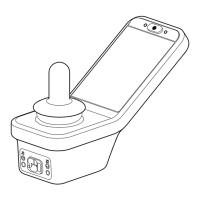
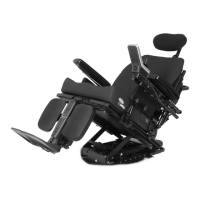

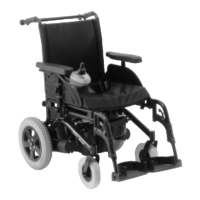


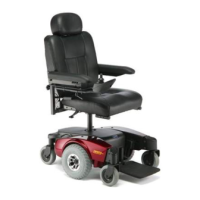
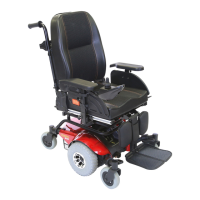

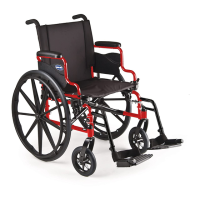

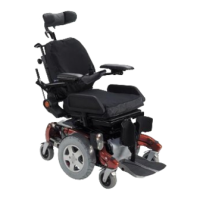
